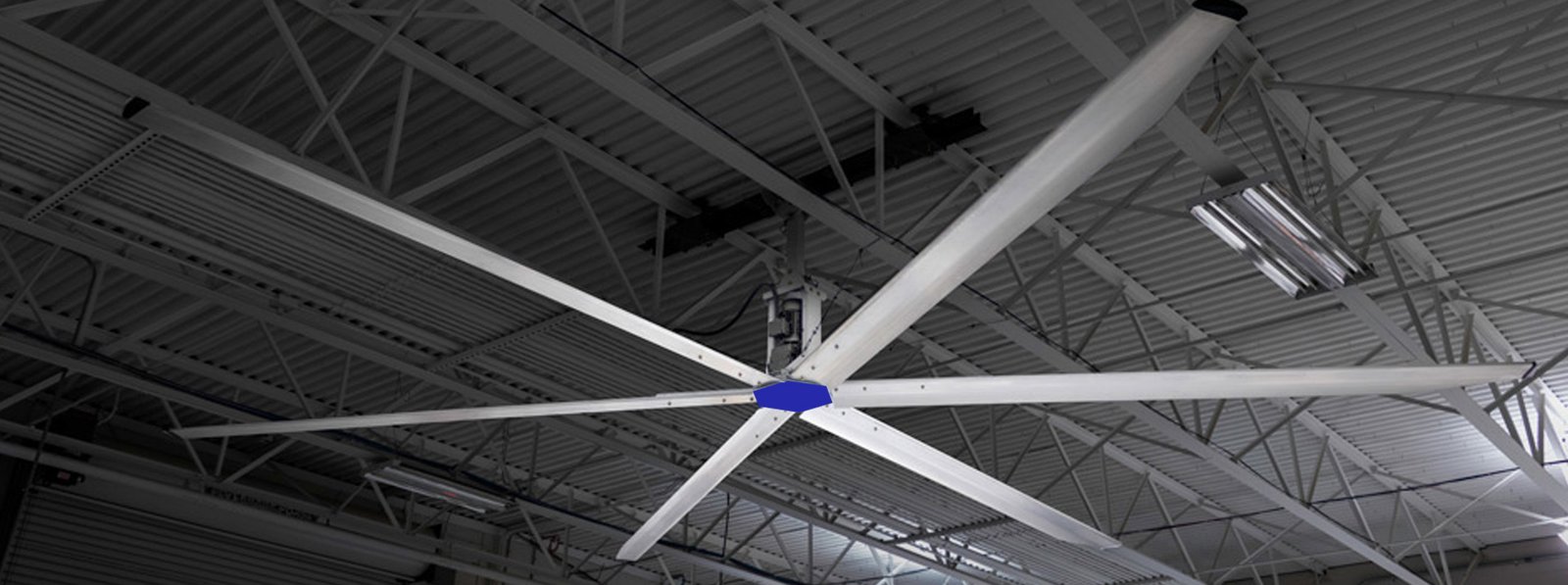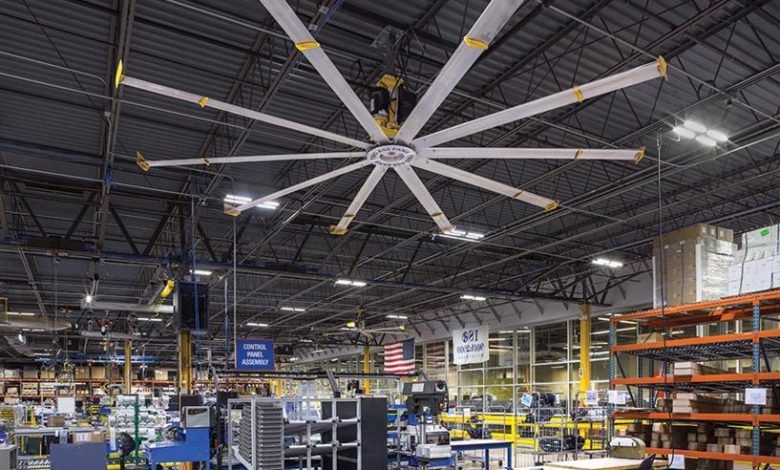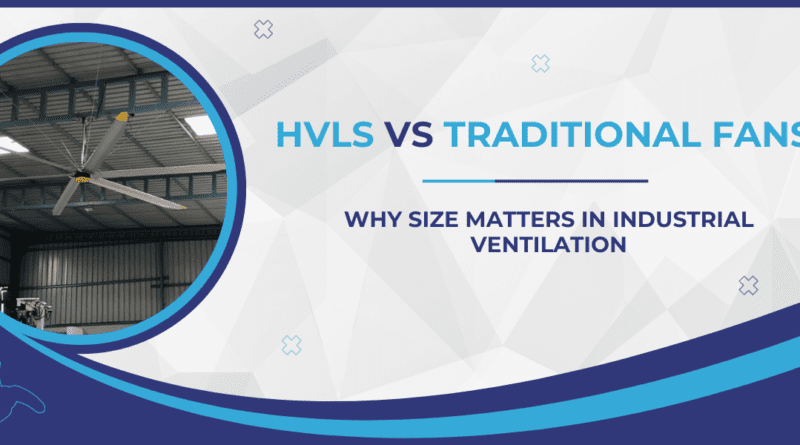HVLS Fans vs Traditional Fans: Why Size Matters in Industrial Ventilation
Imagine: you’re in a vast warehouse or a bustling manufacturing plant. The air feels stagnant, and the atmosphere is a bit uncomfortable. This is where the choice between High Volume, Low Speed (HVLS) fans and traditional fans comes into play. It’s not just a technical decision; it’s about creating an environment where efficiency, cost-saving, and comfort go hand in hand. Let’s explore why in these large industrial spaces, the type of fan you choose makes all the difference, and why HVLS fans are often the heroes of this story.
Undersanding HVLS Fansderst
Imagine a fan so large that its blades span up to 24 feet. That’s your HVLS fan. These giants are the gentle giants of air movement, designed to sweep vast volumes of air at a leisurely pace. Unlike their smaller, faster traditional counterparts, HVLS fans are like the calm, wise wizards of airflow, offering a unique blend of a gentle breeze and energy savvy.
Energy Efficiency: HVLS Fans’ Superpower

In the world of fans, HVLS fans are the eco-warriors. They work on a simple yet powerful principle: move more air, but do it slowly. This approach is a game-changer in energy consumption, slashing operational costs and shrinking carbon footprints. It’s like choosing a bicycle over a sports car for a leisurely journey – efficient, economical, and environmentally friendly.
The Comfort Factor with HVLS Fans
Comfort at work isn’t just a luxury; it’s a necessity. HVLS fans understand this. They don’t just move air; they craft an environment. Their gentle breeze is like a natural air conditioner, making summers feel cooler and winters more bearable. Traditional fans can try, but in vast spaces, they just can’t keep up with the gentle, even touch of an HVLS fan.
Why Size Matters
Size isn’t just a number when it comes to HVLS fans. It’s their secret to success. These large blades cover an impressive area, bringing effective ventilation to spaces that traditional fans can only dream of reaching. It’s like having a gentle giant carefully and quietly ensuring that every corner of your space is well-ventilated.
The Sound of Silence: HVLS Fans vs. Traditional Fans
In an industrial setting, noise is more than just a nuisance; it’s a productivity killer. HVLS fans score big here, operating at whisper-quiet levels compared to the buzzing hustle of traditional fans. This means less noise, more peace, and a better working environment for everyone.
Maintenance and Longevity: The Practical Side

HVLS fans are the low-maintenance friends we all wish we had. Their sturdy build and minimal moving parts mean fewer calls to the maintenance team. This durability isn’t just convenient; it’s cost-effective in the long run, making HVLS fans a wise investment.
Customization and Control: HVLS Fans’ Modern Twist
Today’s HVLS fans come with a cool tech twist. They offer customizable speed controls and can even sync with your building’s management systems. This means you can tailor your ventilation, adapting seamlessly to different needs and conditions – a flexibility traditional fans often lack.
Safety First with HVLS Fans
In the industrial world, safety is king. HVLS fans take this seriously with their secure mounting and slower speeds, reducing the risk of accidents. They also help in keeping floors dry, minimizing slip hazards. It’s like having a vigilant guardian ensuring everyone’s safety.
Conclusion
In the grand scheme of industrial ventilation, HVLS fans are not just an option; they’re a smart choice. They bring a blend of efficiency, comfort, and safety to large spaces, proving that when it comes to fans, size and speed do matter. For businesses looking to make a wise investment in their ventilation system, HVLS fans stand out as the champions of both performance and practicality. As we move forward, their role in creating optimal working conditions is not just beneficial; it’s essential.




